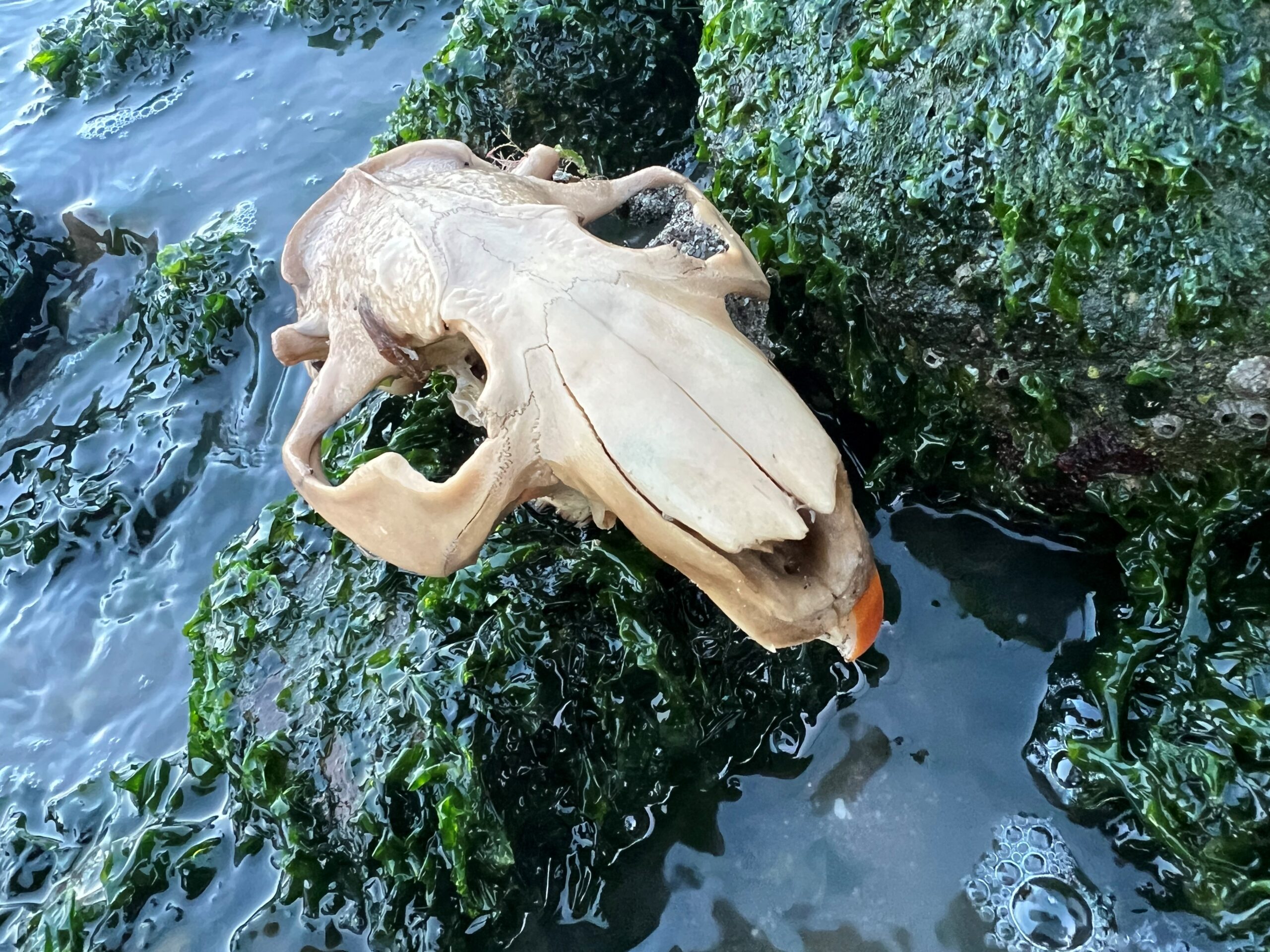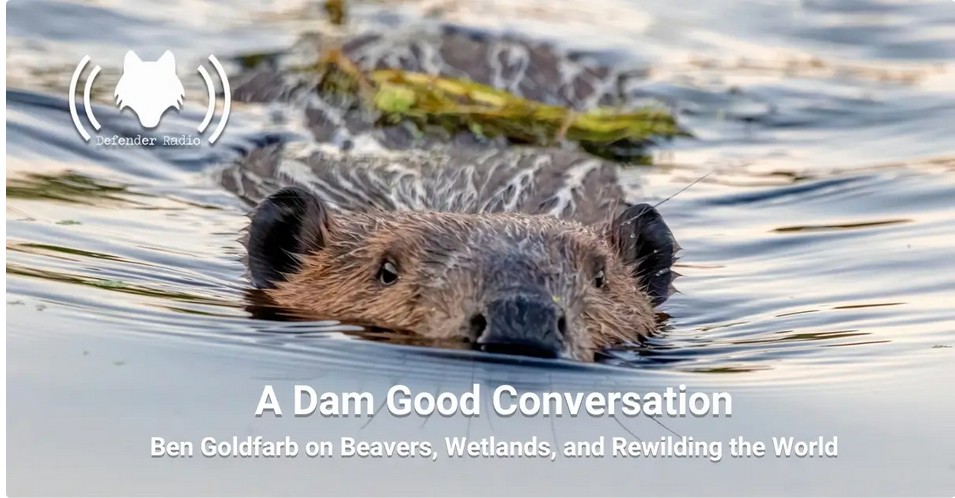
Oregon has stubbornly refused to make beaver trapping illegal. But at least it might be willing to outlaw said trapping in particular watersheds.
Proposed House Bill 3932 limits beaver trapping from certain watersheds
SALEM, Ore. – Conservation groups across the state are rallying in support of a bill that would protect beaver habitats. House Bill 3932 would prohibit beaver hunting and trapping in waterways on certain public lands. It’s in an effort to protect the keystone species, create more biodiversity, and improve water quality in streams.
A beaver swimming.
Southern Oregon Climate Action Now (SOCAN), is an Ashland-based conservation group and just one of several organizations across the state that submitted testimony in support of the bill. SOCAN Executive Director Daniel Scotton says the expansion of beaver habitats is critical for wildfire suppression.
“The more wetlands we have, the more firebreaks we have. While they may not completely stop a fire, they can buy people time to evacuate. If a wetland is large enough, it could be a really powerful abatement for wildfires,” Scotton said.
A beaver holds a stick in a stream.
The bill had its first public hearing last Tuesday but has not been voted on by either chamber.
Opponents of the bill say it creates unnecessary overreach into wildlife management decisions.
Gee I’m curious how this is going to go down. I’m reminded of the agreement by USDA in California to only trap beavers in the rivers with bad fish.
How did that work?
Ahhh the dangerous switchblade of having a “little bit of knowledge about something“. It can lead to such spectacular errors. In this big of speculative science, the author seems to have recently learned that our current beavers are good for wetlands so she therefore infers that Castorides, which was bigger, was even BETTER for wetlands!
Did Giant Beavers Shape North American Wetlands? How Lost Megafauna May Have Influenced Ecosystems
 Giant beavers, scientifically known as Castoroides, were truly remarkable creatures. These beavers were not your average backyard dam builders; they were giants, reaching lengths of up to 8 feet and weighing over 200 pounds. Imagine encountering an oversized beaver, as large as a modern-day black bear, leisurely waddling through ancient forests. Their large, flat tails and webbed feet made them exceptional swimmers, perfectly adapted to a life spent navigating the waterways. The giant beaver’s size alone suggests that it may have had a significant impact on its environment, much like the beavers we know today.
Giant beavers, scientifically known as Castoroides, were truly remarkable creatures. These beavers were not your average backyard dam builders; they were giants, reaching lengths of up to 8 feet and weighing over 200 pounds. Imagine encountering an oversized beaver, as large as a modern-day black bear, leisurely waddling through ancient forests. Their large, flat tails and webbed feet made them exceptional swimmers, perfectly adapted to a life spent navigating the waterways. The giant beaver’s size alone suggests that it may have had a significant impact on its environment, much like the beavers we know today.
Just to be clear, it is generally believed that the giant beavers INABILITY to build dams was what lead to its extinction and replacement by our beaver today. Because Castor could adapt and Castoroides could not.
To understand the potential impact of giant beavers, we must first recognize the role their modern descendants play in ecosystems. Beavers are often referred to as “nature’s engineers” due to their remarkable ability to shape landscapes. By building dams, beavers create ponds and wetlands that serve as vital habitats for countless species. These wetlands help to filter water, reduce erosion, and provide breeding grounds for fish and amphibians. The presence of beavers can transform entire ecosystems, promoting biodiversity and enhancing the health of the environment.
One of the most intriguing questions about giant beavers is whether they built dams like their modern relatives. While there is no direct evidence of dam-building behavior in giant beavers, their anatomical features suggest they could have manipulated their environment. Their large incisors and powerful jaws would have allowed them to fell trees and manipulate vegetation. Even if they didn’t build dams, their sheer size and feeding habits could have still altered water flow and vegetation patterns, indirectly shaping the wetlands.
You know the way big things always impact wetlands. Like elephants, Or bears.
Just so you know the research says that these beavers did not chew trees with those big curved incisors. Isotope analysis says they ate tiny pond weed to survive. Go figure.
But still. never let peer reviewed research get in the way of a good bit of speculative science. That’s what I always say.
The extinction of giant beavers, along with other megafauna, marked a significant change in North American ecosystems. These creatures vanished around 10,000 years ago, likely due to a combination of climate change and human hunting. The disappearance of such large herbivores would have had a profound impact on the landscapes they once inhabited. Without these giant ecosystem engineers, the dynamics of wetlands would have shifted, potentially altering the distribution and abundance of other species.
Call me crazy but I’m pretty sure that the biggest impact on any wetlands at that time was the ICE AGE. You know the one that killed off the mastadons and the woolly mammoths.
At this point in the article the author includes for no apparent reason (and without credit) Joe Wheaton’s famous aerial photo of the aftermath of the Sharps fire.
I guess because magafires are kind of like megabeavers?
The story of giant beavers offers valuable lessons about the interconnectedness of species and ecosystems. It reminds us of the importance of preserving biodiversity and the roles that different species play in maintaining ecological balance. By studying ancient megafauna, we gain a deeper appreciation for the complexities of nature and the delicate interplay between species and their environments. These insights can inform modern conservation strategies, encouraging us to protect the creatures and habitats that remain.
Mm okay, but what you’re doing with this article doesn’t constitute an INSIGHT. Just so you know.
Imagining the landscapes of North America with giant beavers roaming freely invites us to explore the potential for ecological restoration. Concepts like rewilding, which involve reintroducing species to restore natural processes, draw inspiration from the past. While we cannot bring back extinct species, understanding their roles in ecosystems can guide efforts to recreate similar functions with existing wildlife. This approach fosters a more resilient and balanced environment, ultimately benefiting both nature and humanity.
Yes it would be great if we could UNDERSTAND THEIR ROLE in the ecosystem. Or if you could understand anything about them and maybe do a little reading or even just visit wikipedia before you leap into maga-fauna speculation.
You are right that castor is important. But whether Castorides was MORE important because he was even BIGGER is simply not consistent with any science I’ve read.
Bigger doesn’t always mean better.
 Enjoy your Sunday morning coffee with this nice interview with Ben Goldfarb. I especially liked hearing about his thoughts how California used to be the state that needed beavers most and understood them least to where we are now hand over fist piling on beaver supporters now.
Enjoy your Sunday morning coffee with this nice interview with Ben Goldfarb. I especially liked hearing about his thoughts how California used to be the state that needed beavers most and understood them least to where we are now hand over fist piling on beaver supporters now.
Oh and that Heidi Perryman woman gets a mention.






































